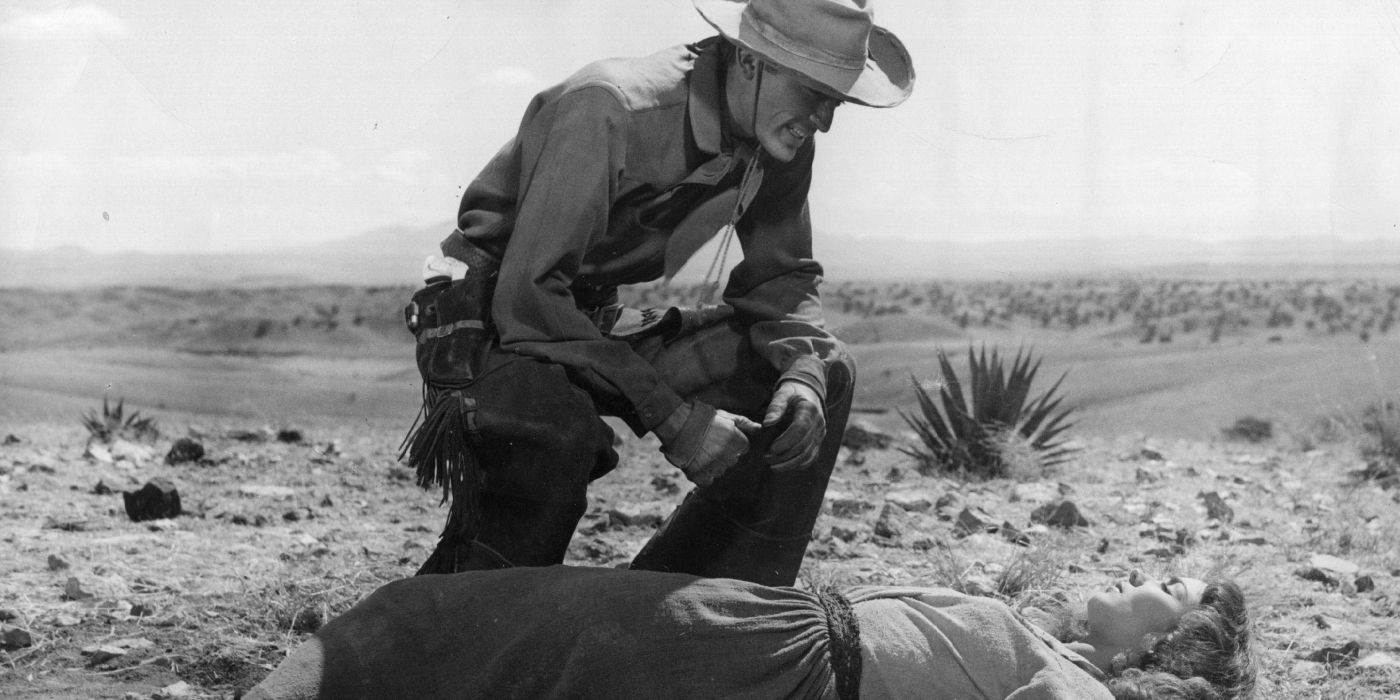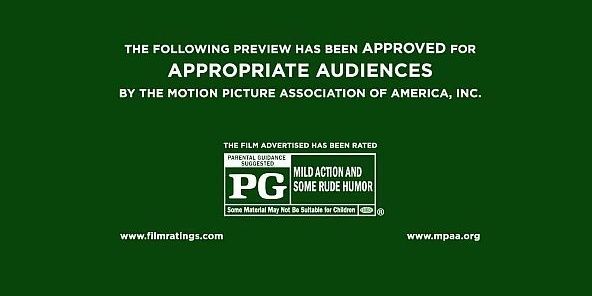
The Western That Succumbed to Censors and Religious Review Boards

The Western That Challenged Censors: Discover why 'Duel in the Sun' faced scrutiny from censors and religious review boards, exploring the history of movie censorship and Martin Scorsese's high praise for the film
Article Summary
Duel in the Sun, a 1946 Western, challenges moral standards of the time by depicting sex, crime, and dysfunctional marriages, leading to its censorship.
The film did not meet the standards set by the Hays Code and required extensive editing, leading to its banning in multiple states due to its explicit content. However, despite its controversial reputation, renowned filmmaker Martin Scorsese commended the film for its overwhelming impact and intricate themes.
Few movies match the sadistic nature of King Vidor's 1946 psychological Western, Duel in the Sun. The characters lead tumultuous lives, engaging in forbidden romances and dealing with dysfunctional families. By the end of the film, each character finds themselves in a worse state than before. Adding to the chaos is a gun-toting preacher who is of little assistance. This star-studded film from Hollywood's Golden Age, while impressive in certain aspects, may be a reflection of the trauma experienced post-World War II. Jennifer Jones delivers a powerful performance as Pearl Chavez, a character who endures immense suffering. Throughout the film, Pearl's life is filled with pain, causing her to become entangled in a sadomasochistic relationship at the slightest hint of happiness. Duel in the Sun faced difficulties with film censors due to its moral standing. The film failed to meet the guidelines set by the Hays Code and religious review boards at the time. Despite undergoing extensive editing by state censor boards prior to release, several states banned the film. Earning the nickname "Lust in the Dust," this Oscar-nominated film gained a reputation for its raunchiness.
The tragedy of Duel in the Sun revolves around Pearl Chavez, who becomes an orphan after her father, Scott Chavez (Herbert Marshall), murders her mother upon discovering her with another man. Pearl witnesses this gruesome act. Before he is executed for the crime, Scott requests that Pearl seek out his second cousin and former sweetheart, Laura Bell (Lillian Gish), to raise her. Laura Bell, who was married at the time, resides on an impressive ranch in Texas. While living there, Pearl, who lacks the refinement of an aristocratic upbringing, grapples with the pressure to conform to ladylike behavior. Additionally, she must choose between two estranged brothers with distinct personalities for a romantic relationship. This synopsis alone would have raised concerns with film censors during that era.
Why Wasn’t ‘Duel in the Sun’ Given a Nod by Censors & Religious Review Boards?
Image via Vanguard
Duel in the Sun violated the strict restrictions of the Hays Code, which governed film and television content at the time of its release. The film broke two main rules of the Code: the prohibition of explicit sex and crime. It included scenes of nudity, a suggestive dance, and even a rape scene. However, a seductive dance performed by Pearl's mother, who also engaged in adultery, was kept in the film. Duel in the Sun also presented dysfunctional marriages, disregarding the Code's emphasis on the sanctity of marriage. Both Pearl's parents and her foster parents had unhappy marriages, with one partner being in love with someone else. Tragic events, including murder and one partner's indifference toward their spouse's death, unfolded within these marriages. Even the morally upright character of Jesse, played by Joseph Cotten, married someone he did not love. In summary, the film portrayed none of its marriages as desirable.
American Movie Censor Lloyd T. Binford Wrote a Letter To David O. Selznick About 'Duel in the Sun'
On the crime scene, Duel in the Sun faced significant criticism, particularly from the censors. The film showcased graphic on-screen killings, which went beyond what was acceptable for the time. Additionally, the film seemed to disrespect religion, a requirement that films were expected to avoid. The character of "The Sinkiller," played by Walter Huston, a gun-wielding preacher, failed to protect the church as intended by the Code. Not only did the Hays Code fail to endorse the film, but it was also banned from screening in certain places, including Memphis, Tennessee, due to its lack of approval. Lloyd T. Binford, the chairman of the Memphis Board of Censors, known for his strict censorship practices, expressed his disdain for Duel in the Sun in a letter to the producer, David O. Selznick. Binford described the film as containing the worst aspects of human depravity and sadism, comparing it to the immoral cities of Sodom and Gomorrah.
Ironically, Lloyd himself held prejudiced views and disapproved of films that portrayed Black people positively. Vincente Minnelli's 1943 musical Cabin in the Sky was one of the films that faced Lloyd's biased criticism. However, his strong language often sparked curiosity among fans, leading to increased interest and success for these films in theaters where they were approved. The impact of Lloyd's censorship practices is evident in the Memphis Brooks Museum of Art, which now screens censored films to promote freedom of expression in art and culture. While only one film was officially blacklisted in Hollywood, Duel in the Sun stands among those that never received the approval of the censors.
The History of Movie Censorship and Ratings in Hollywood
Image via MPAA
The current movie rating system, implemented in 1968, is based on providing extensive information about films to help the audience determine their suitability. This was not always the case, as the introduction of motion pictures in the early 20th century led to moral debates regarding the portrayal of sex and violence in films during the pre-Code era. Scandals in Hollywood involving young subjects prompted the implementation of the censor Code, driven by religious leaders and pressure from the Catholic Church. Will Hays was chosen as the public relations head to portray Hollywood as more than just scandals and advocate for self-censorship. In 1922, Hays established the Motion Pictures Distributors of America, now known as the Motion Pictures Association of America (MPAA).
Despite Hays's efforts, he had no authority over the studios, and the introduction of sound in movies further complicated matters. Hays convinced the studio heads that the most effective and cost-efficient way to alleviate pressure was to adopt the Code. By adhering to the Code from the start, the studios would avoid the expenses associated with modifying films rejected by censor boards. Thus, the Hays Code was established as a censor guide from 1930 to 1968. However, in 1952, the Supreme Court ruled that films were a form of expression protected under the First Amendment. It was not until 1968 that the current voluntary movie rating system was implemented. While there have been minor adjustments to the ratings over time, the principle of providing information to the audience to aid in their decision-making regarding a film's suitability has remained consistent. Since 1990, the MPAA ratings, including G, PG, PG-13, R, and NC-17, have remained unchanged, although there has been discussion about introducing a new category.
The rating would be between NC-17 and R and would highlight more mature subjects without poor public opinion weighing down viewership.
Martin Scorsese Rates 'Duel in the Sun' Highly
Selznick believed that Duel in the Sun would surpass the success of Gone With the Wind, and invested significant resources in its production and advertising. However, despite receiving two Academy Award nominations, the film faced heavy criticism. In the documentary A Personal Journey With Martin Scorsese Through American Movies, Scorsese disagreed with the critics, describing Duel in the Sun as "Quite overpowering" and highlighting the unconventional relationship between the protagonists. Although the film did not achieve commercial success, receiving approval from Scorsese was noteworthy.
Indeed, if you have seen Duel in the Sun, you may agree with some of its positive aspects that even the critics could acknowledge. However, the film explores multiple themes, making it feel somewhat disjointed, much like its problematic censorship. From romance and betrayal to racism, revenge, family bonds, and the cruelty of Western lawlessness, it fails to truly captivate the audience. The film also includes cringe-worthy portrayals, such as Pearl, who is marginalized as a half-breed due to her Indigenous American heritage. She is depicted as not fitting into either white or Indigenous American society, and despite hoping for her redemption, she ultimately dies in a violent encounter with her tormentor. Additionally, the character Vashti, played by Butterfly McQueen from Gone With the Wind, portrays a stereotypical enslaved Black woman with speech and intellectual disabilities, which is out of touch with the racial realities of the time.
Duel in the Sun challenges one's perception of life's meaning, incorporating unexpected sadistic elements that mirror the unforgiving circumstances we may face. The film's censorship by moral authorities serves as a poignant reminder of the significant progress made within the film industry.
Editor's P/S
Duel in the Sun is a classic Western film that has been praised by critics and audiences alike for its powerful performances, stunning visuals, and thought-provoking themes. However, the film also faced significant scrutiny from censors and religious review boards due to its depiction of sex, crime, and dysfunctional marriages.
I believe that the film's controversial content is what makes it so powerful and thought-provoking. The film does not shy away from depicting the dark side of human nature, and it challenges viewers to think about the complex moral issues that the characters face. While some may find the film's content to be disturbing or offensive, I believe that it is important to see these issues head-on in order to understand them and to work towards a more just and equitable society.








